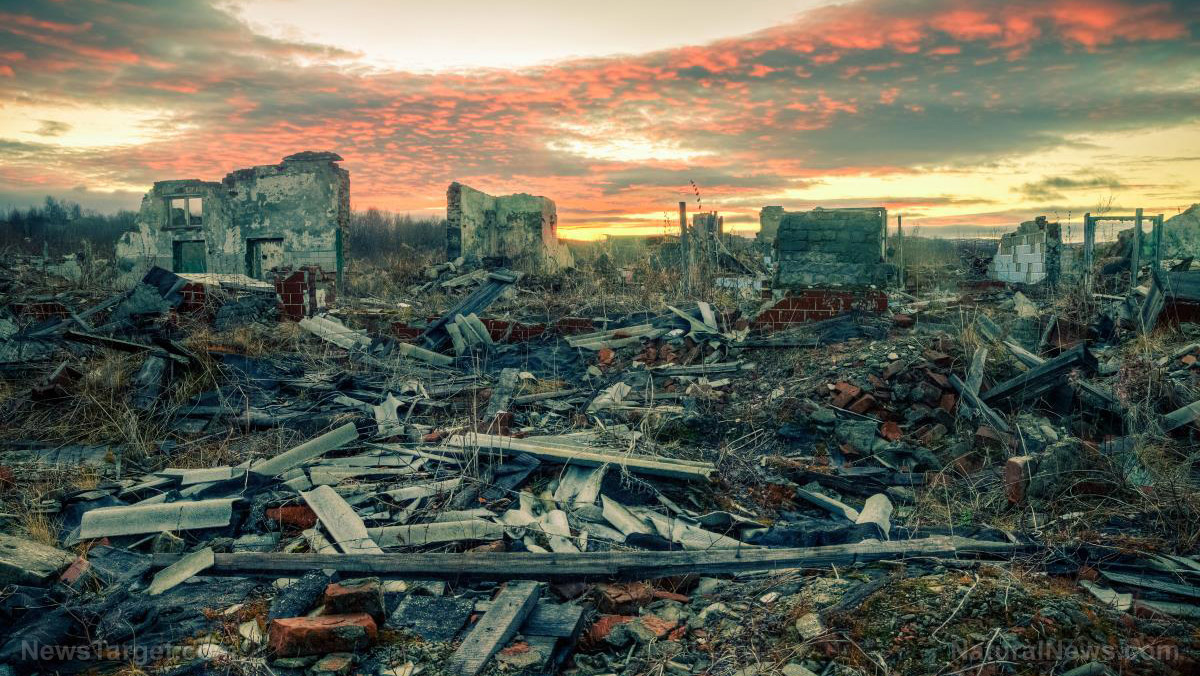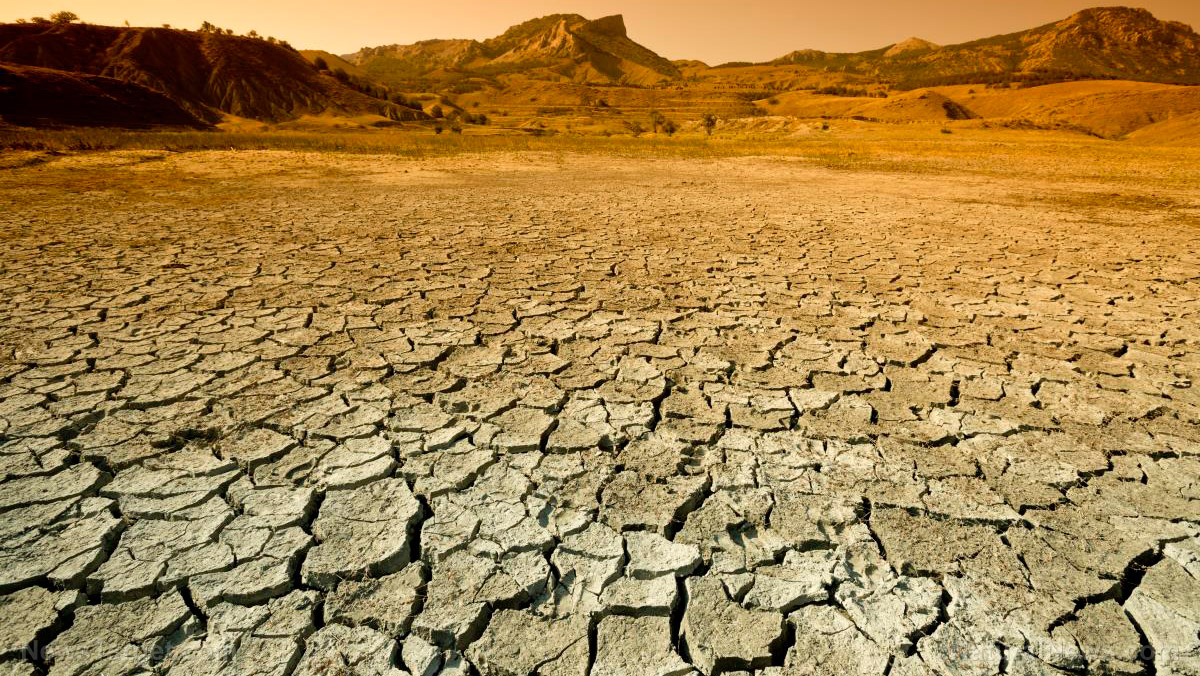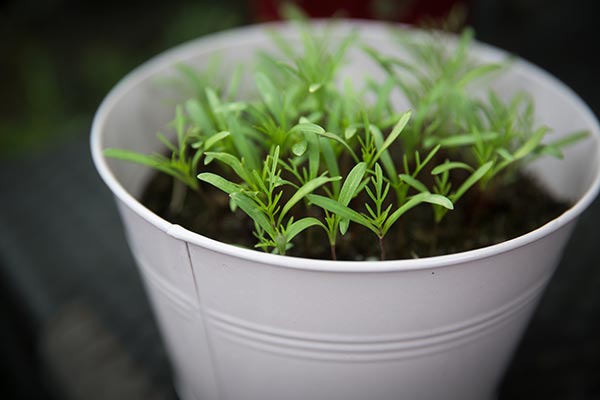Prepping mindset: Switching your focus from short-term to long-term survival
07/21/2021 / By Zoey Sky

Preppers always plan ahead. But are you always focused on short-term instead of long-term survival preparedness?
If you want to improve your chances of surviving a long-term disaster scenario, it’s time to change your mindset. (h/t to SurvivalCache.com)
Short-term vs long-term survival preparedness
When you imagine a survival scenario, what kinds of situations do you usually think about?
Preppers will often think about short-term concerns like getting lost in the woods while camping or surviving a plane crash in the middle of nowhere. While there’s nothing wrong with preparing for these scenarios, common long-term issues may include natural disasters, power outages, or civil unrest.
Short-term survival preparedness
Common short-term survival preps usually involve learning survival methods and skills. You may also already have preps like a food stockpile and bug-out bags (BOBs) that you’ll use to head to a secure bug-out location. These preps and skills can help you survive an emergency and resume your normal life.
Long-term survival preparedness
As a prepper, you need to balance your preps for both short-term and long-term SHTF scenarios. It might sound bleak, but when disaster strikes, you need to be ready to face a future where you may be unable to resume your previous way of life. It’s good to have a survival stockpile with enough food and water for several months to one year and BOBs, but you also need to plan for a long-term scenario that could change your normal life.

Switching to a long-term survival preparedness mindset
You can change from a short-term to a long-term way of thinking by considering important factors like sustainability and self-reliance.
Disaster-proof your shelter
Your home will keep you safe if you’re bugging in, but what if you need to evacuate and you don’t have a bug-out location? Before SHTF, find a suitable bug-out location and make the necessary preps so you can safely head to your hideout whenever you need to.
On the other hand, if you’re planning to bug in, keep your home well-maintained, prep for a long-term power outage in summer or winter, and stock up on necessities like water and food.
General home maintenance
Your home requires maintenance and upkeep to withstand disasters and regular wear and tear. Prevent bigger problems by regularly inspecting your home for common issues like cracks in glass windows or damages on doors or walls and addressing them immediately instead of waiting until it’s too late.
Take time to learn basic carpentry and other maintenance skills to prepare for long-term SHTF scenarios.
You will also need tools and hardware such as:
- Adhesives
- Bolts and nuts
- Hand and power tools such as a hammer, a hand drill, a pipe wrench, screwdrivers, a shovel and wrenches
- Nails
- Rolls of plastic
- Sealants
- Screws
- Tape/ duct tape
- Wood
Environmental preps
Modern buildings and homes were designed to be heated and cooled through central environmental systems like air conditioners or furnaces. But during a long-term power outage, your home may become too hot or cold during summer or winter.
Prep ahead and get a wood-burning stove, retrofit windows and look for an alternative power source if you’re going to bug in when SHTF.
Water supply
Before SHTF, you need to find a sustainable source of water. According to estimates, one person’s average water consumption per month is 3,000 gallons. Added up, that means you need at least 36,000 gallons of water per year. However, you’ll need more if you’re bugging in with your loved ones. If there are four of you in the family, you need about 144,000 gallons of water per year.
You’ll probably need more water when SHTF because you also have to bathe, do the laundry and water your garden. Before that happens, find a sustainable source of water. You can dig a well on your property, install a rainwater collection system, or find local sources like a stream, lake, or river.

Food stockpile
Even if you already have a food stockpile, you need a plan B in case your supply runs out during a long-term SHTF scenario. (Related: Prepping food supply 101: How to survive if you run out of supplies during a long-term disaster.)
Here are alternative ways to get food for your stockpile:
- Fishing
- Foraging for wild edibles
- Home gardening
- Hunting
- Raising livestock
If you live in an apartment, you can start a container garden to make the most of the space in your home.
If you run a homestead, grow the following fruits and vegetables for your stockpile and daily use:
Berry bushes and vines
Aside from bearing delicious fruits, these berry bushes and vines can also beautify your property or act as natural borders along fences:
- Elderberries
- Blueberries
- Bush cherries
- Cranberries
- Currants
- Goji berries
- Gooseberries
- Honeyberries
- Jostaberries
- Grapes
- Kiwi fruit
- Blackberries
- Raspberries
- Strawberries
Perennial herbs
Use these herbs to boost the flavor and nutrient content of your dishes:
- Catnip
- Chives
- Fennel
- French sorrel
- Horseradish
- Lemon balm
- Mint
- Oregano
- Rosemary
- Sage
- Tarragon
- Thyme
Perennial vegetables:
- Asparagus
- Egyptian walking onions
- Jerusalem artichokes
- Rhubarb
Fruit trees
Fruits trees usually grow well in a small space. After harvesting, you can either consume the fruits fresh or preserve them to extend their shelf life.
- Apple
- Apricot
- Cherry
- Fig
- Peach
- Pear
- Plum
Nut trees
Note that nut trees can take many years to establish. Once your trees are ready for harvesting, you will have a ready source of superfoods full of protein and fat.
- Almond
- Chestnut tree
- Hazelnut
- Pecan
- Walnut
Health and first aid
After SHTF, access to emergency medical services may be delayed or become unavailable. Prepare for this by learning first aid and stocking up on the necessary items for minor and major medical emergencies. Learn how to treat common ailments with natural remedies and build up a library of medical-related books.
Learn how to live off of local resources
The supply chain is a vast and intricate web spanning the globe. To save on groceries and prep yourself for a disaster that cuts off the supply chain, live locally. This means looking for local establishments that will provide you with prepping supplies, skills and other needs. Once you find establishments that will serve your needs, learn how to live off local resources and make materials that you need. If you can’t live off of local resources, figure out how to acquire more knowledge or find a new area that offers things you need.
Before disaster strikes, take the necessary steps to reach your goal of long-term survival preparedness. Fortify your home, learn survival skills and start a home garden so you can weather whatever survival scenario comes your way.
Visit Preparedness.news for more tips on how to improve your survival skills.
Sources include:
Tagged Under: emergency preparedness, off grid, preparedness, prepper, prepping, prepping mindset, prepping tips, self-reliance, SHTF, survival, survival mindset, survivalist
RECENT NEWS & ARTICLES
COPYRIGHT © 2017 PREPAREDNESS NEWS




















